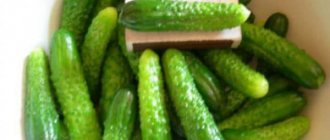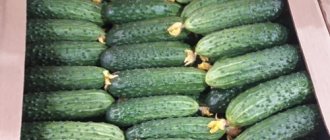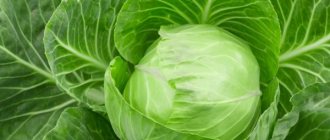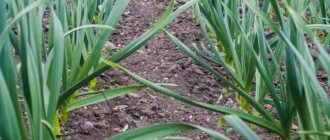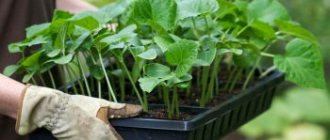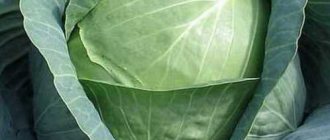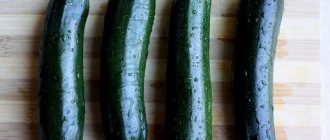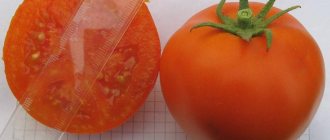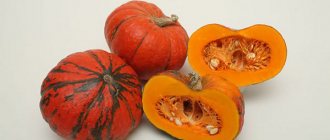The hybrid squash variety Kavili F1 is one of the leaders in world selection, as it attracts the attention of gardeners with several characteristics at once - ultra-early ripening, high yields, drought resistance and delicate taste. Read more about the characteristics and cultivation of this hybrid.
Zucchini Cavili
Cavili squash is resistant to over-ripening
Cavili squash has juicy flesh
Description of the variety
Zucchini Cavili F1 (Cavili F1) is a hybrid of Dutch selection from the company Nunhems, which is suitable for growing in open ground and in greenhouse conditions. Its characteristics are presented in the following table:
| Parameter | Description |
| Ripening period | The hydride is ultra-early. This means that ripe fruits can be harvested already 40-45 days after the appearance of the first shoots. |
| Pollination | Kawili belongs to a group of plants that have parthenocarpy, that is, zucchini is self-pollinating - it is able to form fruits without pollination (without the participation of pollinating insects). This property is especially useful when growing crops early in a greenhouse or in open ground during the rainy season, when bees and other insects no longer fly. |
| Characteristics of the bush | This type of zucchini belongs to bush plants with short internodes. The bushes are compact, so small areas can be allocated for them. Their roots are located close to the soil surface and occupy more space than the above-ground part of the plant. The bushes are covered with dark green leaves with whitish spots. As on the petioles, spiny pubescence is visible on them. The orange flowers are large and fade within 24 hours. Both male and female flowers bloom on the same bush. |
| Fruit characteristics | On average, the weight of one fruit is 280-320 g, but sometimes specimens weighing up to 500 g are found. They grow up to 16-22 cm in length. Uniform zucchini is characterized by a regular cylindrical shape and has a thin skin of light green color. The pulp itself is white, has a delicate and juicy texture, and a high sugar content. It can be used in cooking even in its raw form. In addition, the fruits are suitable for canning. |
| Benefit | The fruits are rich in vitamins (groups B, A, C, E), biotin, nicotinic acid and minerals (zinc, magnesium, potassium, phosphorus). Thanks to this, they have a positive effect on the human body - they normalize the water-salt balance, improve the functioning of the digestive system, produce a diuretic and choleretic effect, reduce cholesterol levels, and improve the condition of the skin. Thus, this is an excellent product for dietary and balanced nutrition. |
| Productivity | Despite the compactness of the bushes, with proper care the yield is at least 7-9 kg per 1 sq. m. The first harvest can be harvested 1.5 months after emergence. The variety is distinguished by the duration of fruit production - they can be collected almost throughout July and half of August, and in some cases the plant produces fruits right up to the cold weather. A distinctive characteristic of Cavili is the resistance of the fruit to over-ripening. Thanks to this, untimely harvested zucchini, weighing up to 1.5 kg, retains all its taste. |
| Features of cultivation | Cavili squash is unpretentious to grow, but needs light and warmth. If stressful conditions prevail during growth (frequent rains, heat), then fruits may form without pollination. The plant itself is resistant to powdery mildew. The variety is labeled F1, that is, it is a hybrid, and the gardener will not be able to independently collect seeds for planting next season. For 1 hectare of land you will need about 8-10 thousand seeds. Their guaranteed germination rate is 85-93%. |
The characteristics of the Cavili hybrid are briefly described as follows:
What are the advantages and disadvantages of a hybrid?
Also check out these articles
- Breed of chickens Hisex Brown
- Milk separator
- How to properly prepare raspberries for winter
- What to feed mulard ducks
Zucchini Cavili F1 is considered by many gardeners to be the best among hybrids and varieties according to various criteria.
- High yield – 9 kg/m.
sq. Zucchini grows by leaps and bounds, so it is recommended to plant them in large quantities only if they are going to be sold. High yield – 9 kg/m. kv - Fruiting is long - up to 2 months.
- There is resistance to powdery mildew.
- Marketability is good. Zucchini can be sold on the market without any problems.
The shortcomings of a hybrid are usually revealed due to poor care or improper planting.
- It does not withstand frost well, so it is planted after late frosts.
- Does not tolerate drought. If there is a lack of moisture, the fruits cannot fully develop.
Planting methods and timing
Zucchini of Dutch origin can be grown in two ways, on which the optimal timing of planting will depend:
- Through direct sowing in open ground . In warm regions, the crop can be easily grown outdoors by planting seeds in tilled soil. Sowing work can be carried out in early May if the air temperature has reached +18°C and the soil has warmed to a depth of 5-7 cm to +12°C. Depending on weather conditions, planting can be carried out until the beginning of June.
- By seedling method . Cultivating zucchini using this technology will allow you to get an early harvest. In this case, the seeds can be sown for seedlings at the end of April or beginning of May. When the temperature is stable above +18°C, seedlings with 2-3 leaves can be transplanted to a permanent place at the rate of 3 bushes per 1 sq. m. m.
Regardless of the method of cultivating Cavili, to maximize the fruiting period, seeds or seedlings of zucchini can be planted in 2 or 3 steps. Time period – 2-3 weeks.
Kavili landing
An early ripening hybrid manages to produce a harvest, even if the seeds are sown in open ground in early June. The optimal time for planting is when the morning frosts end. But if you use temporary shelters, you can start sowing 2 weeks before the onset of the warm period. Not only acrylic and film are suitable as shelters, but also glass jars and disposable tableware made of transparent plastic (liter buckets, containers, cups, bottle halves).
Zucchini seedlings are protected from frost by halves of plastic bottles
Cavili seeds go on sale processed, they are covered with a layer of paint, a disinfectant and a growth stimulant. There is no need to soak or germinate; these seeds are sown dry.
Cavili seeds from the manufacturer are always colored
Choose a place for zucchini that is sunny and ventilated. Hillocks, compost heaps, and areas on the south side of fences and buildings are well suited. The best predecessors: legumes, onions, garlic, early cabbage. Cannot be planted after pumpkin and late cabbage. Planting pattern: 70–100 cm in a row and 140 cm between rows. Dig up the soil, first adding 1-2 buckets of humus or compost and 0.5 liters of vegetable ash per 1 m². In the absence of organic matter, use complex mineral fertilizer nitroammofosk (25 g per 1 m²).
Planting stages:
- Form holes with a diameter of 40–50 cm with earthen sides up to 10 cm high.
- Water them well with water heated in the sun.
- When the water is absorbed, place 2 seeds in the holes in case of poor seed germination. You can put one Kavili seed and the second one of a different variety.
- Cover the top with loose soil in a layer of 2–3 cm.
- You can water again, but then cover the holes with a thin layer of mulch. It will prevent the formation of an earthen crust, but will not prevent the seedlings from making their way to the sun.
Video: planting in open ground
Where to plant zucchini?
The crop will bear fruit well only when cultivated in a suitable place, prepared in accordance with a number of rules.
Selecting a location
The place for cultivating zucchini should be level, well lit by the sun and protected from the winds. It is better not to grow it in flooded and swampy areas, that is, it is advisable that groundwater does not pass close to the surface.
From the point of view of the mechanical composition of the soil, it should be light and neutral acidity (pH 6.5-7). In this regard, fertile sandy and loamy soils are the best option. If necessary, its acidity can be reduced by adding powdered chalk or dolomite flour. The crop will bear fruit poorly on heavy, dense, depleted and cold soils.
It is equally important when choosing a place to grow zucchini to take into account the rules of crop rotation, according to which the following crops are the best predecessors for it:
- potato;
- onion;
- cabbage;
- legumes;
- peas;
- tomato;
- winter wheat.
Invalid predecessors include:
- zucchini of any variety;
- squash;
- cucumbers;
- pumpkins, etc.
Violation of the rules of crop rotation will lead to the occurrence of diseases and a decrease in yields.
Soil preparation
Having chosen a site taking into account all the above recommendations, you can begin preparing the soil, which should be done in the fall to better saturate the soil with organic and mineral fertilizers. To do this, the area needs to be dug to a depth of 30-35 cm, removing all plant debris and weeds. At the same time, you should not break the lumps. For every sq. m of fertile soil it is worth applying the following fertilizers:
- 6-8 kg of compost or rotted manure;
- 50-60 g of superphosphate;
- 50-60 g of potassium salt.
Many summer residents prefer to sow green manure after harvesting, which, after cutting, rots under a layer of snow and saturates the soil, so in the spring re-application of fertilizers is no longer required.
In the spring, 7 days before sowing, the soil should be dug up again to a depth of 25-27 cm, adding nitrogen-containing fertilizers - 50-60 g of ammonium nitrate per 1 sq. m. m. To confirm the readiness of the soil for planting zucchini, you need to take a little soil in your fist, lightly squeeze it and throw it. If the lump crumbles, then the soil is well prepared and you can begin sowing. If the waterlogged soil only flattens when it falls, you should wait a while with planting.
The low-lying area needs to be dug up to a depth of 15 cm and beds must be formed with the following parameters:
- height – 20-30 cm;
- width – 100 cm;
- tilt - to the south for better soil heating.
Zucchini will grow well in insulated beds. To prepare them, you need to make grooves 30 cm deep, put compost in them and sprinkle it with a 20 cm layer of soil.
If the site was not properly cultivated in the fall, it should be fertilized in the spring in accordance with the soil type:
| Soil type | Fertilizer application per 1 sq. m |
| Peat | 3 days before planting, add 2 kg of compost, a bucket of turf, 1 g of superphosphate, 20 g of potassium sulfate and 8 g of ash. Dig up the area and water it with copper sulfate (5 g per 200 ml of chicken manure infusion and 10 liters of water) at the rate of 3 liters per 1 square meter. m. At the end, cover the bed with film. |
| Clayey | Add 3 kg of sand, sawdust, peat and humus. From mineral fertilizers, add 20 g of superphosphate, 18 g of nitrophoska and 8 g of wood ash. |
| Light loamy | Apply the same fertilizers as in the case of clay soil, but excluding sand. |
| Sandy | Add 3 kg of sawdust and humus, as well as 2 buckets of turf and peat to retain moisture. Use the same mineral fertilizers as in the case of clay soil. |
| Chernozemny | It is enough to fertilize with 3 buckets of turf, 0.5 buckets of sawdust, 40 g of superphosphate and 16 g of ash. |
Growing
The Kavili zucchini hybrid is unpretentious and easy to care for.
Sow this vegetable crop in light, nutritious soil with neutral acidity. It is desirable that the predecessors of this pumpkin representative be:
- potato;
- onion;
- peas, beans or beans;
- cabbage.
Before sowing the crop, you need to enrich the soil with compost or humus. Green manure, a mixture of ash and superphosphate fertilizer, also gives good results.
Zucchini plants are grown using two methods. One of them is using seedlings, and the second is by direct sowing in the ground.
In the first case, seedlings are sown in mid-spring. To do this, place one seed in the hole of each pot, or preferably 2–3. After the appearance of young plants, weak specimens are pulled out and strong specimens are left. After 30 days, the seedlings are transferred to the holes to a permanent place of development.
See also
Description of the best varieties of round zucchini, features of cultivation and careRead
Each of the options implies that a group of plants in the garden bed will be located at a distance of 70x140 cm. This distance between the zucchini will allow for full development.
You need to know that store-bought seeds are treated with tyramine (a nutrient), so you should not soak such seed material.
Young plants require a lot of light, heat and moisture. Failure to comply with these conditions sharply reduces the yield of Kavili zucchini, and the taste is also lost in those fruits that have grown. The temperature for active development of the culture should be 20 °C and above. If the amount of heat is insufficient, then growth may stop.
The volume of water should be up to 10 liters per m2. Also, in order for the plant to develop safely and receive enough light, it is necessary to periodically weed, loosen the top layer of soil, and, if necessary, fertilize.
Pre-sowing seed treatment
To cultivate Cavili squash in their gardens, gardeners can only use purchased hybrid seeds, which are often sold after undergoing the necessary processing. Therefore, no special preparation is required. However, some prefer to treat the seeds with a special nutrient composition, Tyramine, before planting. In this case, they will not need to be pre-soaked, since this procedure will only help wash off this composition.
Diseases and pests
If Kavili squash is grown using proper agricultural technology, it is not afraid of pests and diseases. But with thickened plantings, waterlogging of the soil and non-compliance with crop rotation, problems may arise.
Table: diseases and pests
| Diseases and pests | Symptoms | Control measures | Prevention |
| Downy mildew | The surface of the leaf is covered with round or angular spots of white color, which gradually increase in size and turn brown. A grayish-olive coating appears on the underside. Gradually the leaf crumbles and only cuttings remain. |
plants 0.2% suspension of 80% Zineb.
or Oksikhom according to the instructions. |
plant residues and destroy.
plants.
the strongest plants.
|
| Anthracnose | The disease affects all above-ground parts of the plant. Depressed spots of pale pink color appear on the fruits. The leaves become covered with yellow-brown growing spots, as a result of which the leaf blade curls and dies. | Spray the zucchini with a 1% solution of Bordeaux mixture or a 0.4% suspension of copper oxychloride. Use strictly according to instructions. | |
| Spider mite | The pest feeds on sap from plant cells. The appearance of a mite can be indicated by small white dots on the leaf, especially on the underside, and light cobwebs. In case of severe damage, the leaf turns white from multiple damages. | Treat with Iskra, Confidor or Fosbecid. In case of severe damage, use Karbofos. The drugs are supplied with instructions. |
remedy - for 10 liters of water take 1 cup of chopped onion, 1 tbsp. l. hot red pepper and laundry soap shavings (1 piece).
These flowers can be planted directly on the beds or nearby. |
| melon aphid | The colony is located on the underside of the leaf, as well as on the stems and ovary. By sucking out the juices, the pest causes the leaf to curl and the ovary to fall off. If measures are not taken, the bush may dry out. | Karbofos - 60 g per bucket of water. Spray with this solution during the growing season. |
weed grass.
plant residues. |
Photo gallery: learning to recognize diseases and pests of zucchini
Downy mildew
Anthracnose affects both fruits and leaves
A plant affected by spider mites looks helpless
Melon aphids can cause the zucchini bush to dry out completely.
Sowing seeds in open ground
To get a good harvest, it is not necessary to plant a lot of bushes. It is enough to grow several healthy and strong specimens on the site. The main thing is not to thicken the planting, since in this case the fruits will not set well, which will negatively affect the yield of Dutch squash. The plant will feel good in the garden if per 1 sq. m place 3 bushes.
The optimal scheme for planting seeds in pre-prepared soil is as follows:
- hole depth – 5-6 cm;
- distance between holes – 70-80 cm;
- Row spacing is 130-140 cm.
It is this planting scheme that will allow the bushes to fully develop. In each hole you need to throw 3-4 seeds with the pointed end down. Next, they should be watered generously, sprinkled with earth and lightly compacted. It is advisable to mulch the top of the bed with a layer of sawdust, peat or chopped hay. Planting can also be protected from possible return frosts with a film cover.
The first shoots will appear in 7 days. If several seeds sprout in each hole, then you need to leave the strongest sprout, and the rest should be cut off above ground level, and not pulled out, so as not to damage the sensitive nervous system of the plant.
How to sow seeds in open ground can be clearly seen in the video:
Characteristics of the variety
The Cavili hybrid is completely self-fertile and does not require pollination. Bush with predominantly female flowering type.
Productivity
The zucchini variety “Kavili F1” is distinguished by stable yields. The fruit sets well, despite the weather. One bush will ripen from 4 to 7 zucchini at the same time.
Important! The average yield of the variety in open ground is about 9 kg of fruits per square meter. m. In greenhouses the figures are slightly higher.
Area of application of fruits
The Kavili F1 variety, beloved by gardeners, is suitable for baby food or first feeding. Tender purees, juices and pancakes are prepared from it.
For adults, zucchini is indicated for dietary nutrition and for improving the health of the body. The variety is used in cooking, for freezing and various types of processing.
Reference! Caviar made from Kavili pulp is especially tasty.
Resistance to diseases and pests
“Kavili F1” is a new generation hybrid that is resistant to characteristic diseases, such as powdery mildew. The bush is rarely spoiled by pests.
Judging by the reviews of gardeners, the “Cavili F1” squash is in rare cases affected by the following diseases:
- anthracnose;
- downy mildew.
Among the pests, the plant is bothered by melon aphids, as well as spider mites. A bush can get sick when a gardener does not follow crop rotation, planting patterns and does not properly care for Kavili. You cannot plant this variety of zucchini after squash, cucumbers and pumpkins. Good predecessors for “Cavili F1” would be potatoes, onions, legumes, and all types of cabbage.
Anthracnose appears as pink spots on the fruits and leaves of the plant. As a result, the crop becomes unfit for consumption. To prevent disease, only the strongest seedlings are planted in the garden. For preventive purposes, bushes are regularly sprayed with a 1% solution of Bordeaux mixture.
Downy mildew can be suspected by the characteristic white spots on the leaves of Cavili. Gradually, the disease affects the entire plant. The leaf plate dries and crumbles. For preventive purposes, zucchini is treated with complex-action drugs “Oxyhom” or “Zaslon”.
If the zucchini has been attacked by a spider mite, then punctures and white dots will be visible on the leaves. A thin cobweb is visible on the reverse side. The tick itself is very difficult to see - its length is no more than 1 mm. Insecticides, which are sprayed repeatedly, will help get rid of the pest.
Advice! Among the folk methods, marigolds are good at repelling ticks - they are planted next to zucchini.
The melon aphid is no less dangerous for the “Cavili F1” variety. The pest feeds on the cell sap of the plant - as a result, the leaves curl, dry out, and the fruits fall off. Regular spraying with Karbofos, as well as weeding all weeds, will help to avoid the appearance of aphids.
Advantages and disadvantages of the variety
Zucchini "Cavili F1" has many advantages:
- high productivity;
- stable fruiting;
- compact bush shape;
- good plant immunity;
- excellent taste of fruits;
- versatility of application.
In addition, the crop can be stored fresh for about two months, which is not typical for many other varieties. It is enough to spread the zucchini in one layer in a cold cellar or wrap it in paper. Fresh fruits will last no more than a month in the refrigerator.
Despite many positive properties, the Kavili F1 variety has a significant drawback - independent propagation of zucchini is impossible. For further cultivation, you will have to purchase seeds every year from a specialized store; you cannot collect your own. The fact is that hybrid plants do not pass on their qualities to subsequent generations. Various bushes will grow from their own seeds, the yield of which is questionable.
Growing Cavili in seedlings
This technology involves preparing seedlings in a greenhouse or in an apartment, which will then need to be transplanted to a permanent place. We will consider each stage separately.
Preparing seedlings
Seedlings do not tolerate picking well, since this procedure significantly weakens their root system. It is best to grow them in separate containers - plastic or peat pots with a diameter of at least 20 cm. As for the nutrient mixture, you can purchase it at a garden store or prepare it yourself by taking loose and nutritious soil from your own garden.
Growing seedlings is carried out according to the following instructions:
- Pour soil mixture for seedlings into the pots and prepare holes to a depth of 3-4 cm.
- Throw 1 seed into each hole with the pointed tip facing down.
- Moisten the soil with a spray bottle and cover with glass or film, and then move the pots to a sunny windowsill.
- Until the first shoots appear, keep the seedlings at an air temperature of +25...+28°C. After 4-5 days, when the first shoots appear, it is necessary to remove the protective covering and lower the temperature by a few degrees. At the same time, it is important to water the soil in a timely manner to prevent the formation of a dry crust on the surface.
- With the appearance of the first sprouts, move the zucchini to a brighter place, otherwise they will become excessively elongated. They do not need additional lighting.
- A week before transplanting into open ground, seedlings must be hardened. To do this, the pots need to be moved to a cool room (balcony, veranda), where the daytime temperature is within +16...+18°C, and the night temperature is not lower than +13°C. Cold wind and drafts are unacceptable.
Transplantation into open ground
At the age of 20 days, seedlings with 2-3 true leaves can be transplanted to a permanent place. Before planting, the area needs to be watered abundantly and holes prepared according to the 70x140 cm pattern. Young plants should be deepened up to the cotyledon leaves.
After planting, you need to cover the seedlings with a protective covering, stretching a thick transparent film over the wire arcs. On sunny days it must be raised regularly, gradually preparing the young plant for new growing conditions.
Description of Kavili squash
Cavili squash belongs to a group of plants that share one amazing property, namely parthenocarpy. What does it mean? This is the ability of plants to set fruit without pollination. That is, pollen is not needed in the process of fruit formation, since it does not play any role. This property is especially useful when grown in greenhouses or in open ground during the rainy season, when bees and other pollinating insects do not fly.
Kavili is a hybrid variety and is marked with a special label F1. It showed excellent performance in greenhouses and open ground. It grows in the form of a bush and has a compact size, which is very much appreciated by gardeners who have small areas for growing vegetables. And farmers with large farms also appreciated this feature.
The internodes are small. The leaves and petioles are covered with spiny pubescence.
The Kavili squash bush is compact in size.
The fruits have a beautiful cylindrical shape, 16 - 22 cm long. The weight of a ripe zucchini is 320 g, but it can weigh up to 500 g. The color is traditional for many types - light green. The skin on young fruits is thin, on overripe ones it is denser. The flesh is white or slightly greenish. Very tender and juicy, with excellent taste. Even overripe fruits have a good taste and delicate texture.
Cavili squash is a high-yielding hybrid variety.
Advantages and disadvantages of the variety
| Advantages | Flaws |
| Ultra early ripening | Nothing will grow from the collected seeds; seed material must be purchased |
| Compact size plant | |
| High yielding | |
| Long-term fruiting | |
| The fruits have excellent commercial quality | |
| Able to resist common diseases such as powdery mildew | |
| Universal purpose |
Benefits of Cavili Zucchini
Zucchini fruits are simply a storehouse of nutrients. Vitamins B, A, C and E. Biotin and nicotinic acid. Minerals - magnesium, potassium, iron, phosphorus, zinc. Zucchini has only a positive effect on the human body:
- Regulates water-salt balance.
- Normalizes the functioning of the digestive system.
- It has a diuretic and choleretic effect.
- Reduces cholesterol levels.
- Improves skin condition.
- Reduces excess weight.
Video: Cavili squash
Features of growing zucchini in a greenhouse
In cool climate regions, it is advisable to plant seeds in a greenhouse. To do this, you can use both the seedling method and direct sowing of seeds in the ground. The first technology is more attractive because it allows you to reduce the ripening period of fruits by almost 2 weeks. In any case, seeds and seedlings should be planted in the same way as in open ground. To increase productivity, consider the following recommendations:
- The soil in the greenhouse for zucchini needs to be prepared in the fall. To do this, you need to dig it up and apply fertilizers - nitroammophosphate, superphosphate and manure - to a depth of 8 cm. If mineral fertilizers were not applied in the fall, they can be placed directly into the holes and then mixed with soil. For one plant, it is enough to add 30-40 g of nitroammophoska. As for manure, it can only be applied in advance.
- At the time of planting work, the soil temperature should be kept within +20...+25°C, and the air temperature should be +23°C during the day and not lower than +14°C at night.
- During the development period, the plant does not need to be fed if all nutrients have been added to the soil. This is due to the fact that in greenhouse conditions the above-ground part of zucchini develops quickly, and additional stimulation can only lead to the growth of leaves and shoots. In turn, this will negatively affect the formation of ovaries and the yield of the variety.
Growing Kavili zucchini F1
In general, this hybrid, like most pumpkin hybrids, does not have any special requirements for care and growing conditions. First of all, he needs a standard set: good lighting and food. To increase the breathability and nutritional value of the soil when preparing a site for planting Kavili F1 zucchini, it is necessary to qualitatively fertilize the soil and take measures to improve its structure:
- in clay or loamy soils it is recommended to add peat, sawdust or humus, wood ash and superphosphate;
- Peat, compost, clay flour, complex mineral fertilizers, and wood ash should be added to sandy soil;
- Peat soil will respond well to the application of organic matter, river sand, clay, and phosphorus-potassium fertilizers.
Incorporating green manure into the soil has a good effect. This procedure restores the soil structure and improves its condition.
When choosing a site for planting a hybrid, pay attention to two more rules that affect the success of growing Kavili F1 zucchini:
- the place should be well lit and protected from the winds;
- Be sure to follow crop rotation, do not plant zucchini in the same place for several years in a row, and do not allocate a plot for them after cucumbers, squash and other pumpkin crops. Good predecessors for the hybrid are cabbage, radishes, onions, carrots, greens, potatoes, tomatoes, and winter rye.
Cavili F1 zucchini feels comfortable in an open, well-lit area, where there is no stagnant moisture or drafts
Cavili F1 can be planted either by seeds or seedlings. Seeds germinate quickly, no later than a week after sowing. And the harvest of technically mature fruits can be harvested 40–50 days after germination. Growing the hybrid in seedlings will give an earlier harvest, since zucchini can be sown in April, and they will spend the initial growing season in comfortable home conditions or in a warm greenhouse.
Planting strong seedlings in the ground will speed up the harvest period by approximately 2 weeks
Seeds are sown or seedlings are planted in open ground after the soil has warmed up to +12 degrees to a depth of ten centimeters. The nuance of planting zucchini of this variety is to maintain a comfortable distance between the plants being planted. The holes should be located at a distance of about 70 cm from each other in a row, the recommended row spacing is 1.3–1.5 m. With this planting scheme, the squash bushes will be provided with sufficient area for nutrition and development.
Thickened plantings will negatively affect fruit set and hybrid yield.
When sowing seeds in one hole, you can plant 2-3 seeds to a depth of about 5 cm, and after the emergence of seedlings, thin out and leave one of the strongest seedlings in the hole. Kavili F1 is considered a cold-resistant hybrid, but when sowing early, it is recommended to additionally protect the beds by covering them with spunbond or film from spring frosts.
Zucchini of this variety can be sown in several stages, with an interval of a week. Such sowing will provide you with young fruits until late autumn.
Growing Cavili F1 zucchini in a greenhouse and in warm beds
The hybrid can be grown not only in open ground, but also in protected ground. This method has the following advantages:
- plants will be reliably protected from returning spring frosts;
- the hybrid harvest will be not just early, but ultra-early;
- yield indicators will reach maximum sizes.
Kavili F1 squash shows good yield and growth indicators when grown in warm beds. Such structures are especially relevant in regions with cool climates. The meaning of a warm ridge is to place organic debris and waste layer by layer in a wooden box about half a meter high and wide:
- the lowest layer may consist of large waste: rotten boards, branches, cardboard. It will take a long time to decompose and act as a drainage layer;
- the bed must have at least 2 layers of plant residues (mown grass, weeds, rotten vegetables, food waste, etc.) and manure. About 10 cm of earth is poured on top of each layer;
- the top layer of soil should be about 20 cm.
A warm bed can generate heat for 2–3 years
If such a bed is prepared in the fall, then the plant residues will begin to decompose, release heat and provide the hybrid with comfortable growing conditions.
Table: advantages and disadvantages of growing zucchini in a warm garden bed
| pros | Minuses |
| Getting an early harvest | Additional labor costs for constructing the structure |
| Plants are reliably protected from spring frosts | |
| In the first year of operation, plants do not require additional feeding. | |
| Convenient care of plantings |
Caring for Cavili zucchini F1
Caring for this variety of zucchini is absolutely standard: it is necessary to remove weeds in a timely manner, periodically loosen the soil, feed the plants and regularly water the plantings. Particular attention must be paid to the procedure for loosening the soil. This must be done very carefully: the depth of loosening between rows should not exceed 15 cm, and under the bush - 5 cm. The plant has a superficial root system, deep loosening can damage it.
Some novice gardeners hill up zucchini, as their roots are sometimes exposed. The procedure carried out in the 4th and 5th leaf phases really helps the plant grow an additional root system. Zucchini reacts poorly to hilling carried out later in the growing season. If during this period the roots of the bush are exposed, it is better to sprinkle them with fertile soil.
Water the hybrid only with water heated in the sun. Watering is carried out at least once a week before fruiting begins and twice as often after the first fruits appear. Excessive moisture is undesirable for zucchini; it can cause the spread of fungal infections. Watering is carried out at the root, since additional moisture on young ovaries can lead to their rotting. It is better to carry out the procedure in the evening to avoid the risk of sunburn of the plant.
In rainy summers, when there is an excess of moisture, cuttings of boards, pieces of slate, and film can be placed under the ripening fruits to prevent rotting of the growing zucchini
Experienced gardeners claim that if you stop watering the plant about a week before harvesting, the harvested fruits will have a richer taste and aroma.
Compliance with the rules of agricultural technology is a reliable guarantee that the Kavili F1 squash will grow healthy and strong. Problems associated with diseases and pests can arise in case of dense plantings, waterlogging of the soil, and non-compliance with crop rotation rules. When caring for a hybrid, it is important to systematically inspect it and take effective measures at the first signs of damage.
Recent Entries
5 working ways to use tar in the garden 7 indoor plants that help you get married even in adulthood Indoor plants that can bloom in trouble
Seed producers claim that Cavili F1 squash is resistant to the main disease of the crop, powdery mildew.
Feeding the hybrid
Zucchini Cavili F1 responds well to fertilizing. The main thing is to carry them out correctly and not to overdo it with the application of nitrogen fertilizers, because the described hybrid is early ripening, so late application of nitrogen-containing fertilizers can provoke the accumulation of nitrates in the fruits. Zucchini grown in protected soil should be fed especially carefully. The fact is that in greenhouse conditions the above-ground part of the zucchini will quickly and actively develop; additional stimulation can lead to an increase in green mass to the detriment of the formation of ovaries.
If a sufficient amount of organic and mineral fertilizers were added when preparing the site, then the early ripening Kavili F1 hybrid will have enough for normal growth and development.
Table: feeding mode of the Cavili F1 hybrid
| Feeding time | Type of feeding | Compound | Consumption rate | Peculiarities |
| Before flowering | Root | 0.5 l mullein + 1 tbsp. spoon of nitrophoska per 10 liters of water | 1 liter per plant | |
| During flowering | Root | 40 g wood ash + 2 tbsp. spoons of liquid fertilizer Effecton or 20 g of complex mineral fertilizer per 10 liters of water | 1 liter per plant | |
| During fruit ripening | Root | 3 tbsp. spoons of wood ash or 30 g of nitrophoska per 10 liters of water | 2l per plant | |
| Foliar | Preparation Bud (according to instructions) Ross liquid fertilizer (according to instructions) | 2 l per 10 sq. m | You can carry out 2 foliar feedings with an interval of 2 weeks |
The hybrid does not tolerate fertilizing with fertilizers containing chlorine.
Harvest
When growing Cavili F1, you should pay attention to the timely collection of fruits. A distinctive feature of this variety is its resistance to overgrowth, that is, even fruits that have been left standing in the garden do not lose their excellent taste. But if the harvest is harvested in a timely manner, then the ripe zucchini will not draw on the plant’s strength and it will lay new ovaries.
The collected hybrid fruits are stored well in the refrigerator (up to 1 month) or in the cellar (up to 2 months). The main condition for long-term storage is cutting the fruit with a piece of the stalk and the absence of light.
The skin on young fruits of Kavili F1 squash is very thin, so they cannot be stored for long periods of time
Method of growing Cavili in warm beds
In regions with a cool climate, structures such as warm beds have become very popular. Their advantages are as follows:
- allow you to get an early harvest;
- do not require fertilization during plant development;
- make caring for bushes much easier;
- protect the crop from the threat of freezing;
- involve planting both seeds and seedlings.
The disadvantage of this method is the laboriousness of preparing the beds. This is done in this order:
- Build a wooden box 50 cm high and wide. Place it in a well-lit place.
- Place a fine-mesh mesh at the bottom of the box as a drainage layer, onto which lay large organic debris that decomposes over a long period of time. These can be branches, rotten boards, cardboard and paper.
- Fill the box with soil in a layer of about 3 cm.
- Throw plant waste in the form of weeds, grass clippings, rotten vegetables or other food debris onto the ground. The optimal height of such a layer is 10-15 cm.
- Fill the soil again, but with a layer of 10 cm.
- Lay out the manure in a layer of up to 10 cm. It can also be replaced with plant waste.
- At the end, pour the soil in a layer of at least 20 cm.
Such a bed must be prepared in the fall so that organic waste can decompose properly. In the spring, you can plant Kavili zucchini using the previously described methods.
Features of care
Zucchini Kavili f1 likes to grow in light soils, but if you plant the plant in heavy, clay soil, it will develop, but its yield will only decrease. Therefore, to improve the water and air permeability of the soil, you need to add river sand and peat.
Acidity also plays an important role for the plant. Ideally, it will be neutral. In order to reduce the acidity of the soil, dolomite flour or lime is added to it.
Experts recommend that if the crop is planted in a shaded area, then it is necessary to thin out the plants during the flowering period and the formation of ovaries.
Removing a couple of leaves will allow more light to come in.
You should also try to harvest in a timely manner. Although the high quality of the fruits is preserved when their harvest is delayed, the formation of new zucchini slows down. This negatively affects productivity.
Planting care
The Cavili hybrid is unpretentious in care, but requires timely implementation of a number of agrotechnical measures. We will consider each of them separately.
Watering
The soil under the bushes should always be moderately moist, but dampness should not be allowed to develop, as it can lead to the development of fungal diseases. Before fruiting, zucchini should be watered once a week at the rate of 10-12 liters per 1 square meter. m. When the fruits begin to set, the zucchini should be watered every 2-3 days at the rate of up to 15 liters per 1 sq. m. m. The soil must be kept moist at a depth of 20 cm.
To water zucchini, you need to use settled warm (25°C) water. To prevent rotting of young ovaries, it should be poured only at the root.
Watering should be done in the evening, when solar activity declines.
Loosening and mulching
For the first time, the soil needs to be loosened after the emergence of seedlings or 2-3 days after planting the seedlings in the ground. Next, this procedure must be carried out after watering or rain. Loosening should be light and superficial to prevent the appearance of a crust. Between the rows the soil should be loosened to a depth of 14 cm, and under the bushes - 5 cm, since otherwise the delicate roots located close to the soil surface can be damaged.
During the loosening process, it is also necessary to weed the area, destroying all weeds.
To prevent rapid evaporation of moisture, you need to mulch the beds. For these purposes, the ground can be sprinkled with crushed hay, peat chips or sawdust, and then lightly compacted.
Thinning
If the zucchini grows in a shaded area, it is worth thinning out its bushes so that the sun's rays can freely illuminate the entire planting. For these purposes, it is enough to remove a few of the largest leaves. In particular, this procedure should be carried out during the period of flowering and setting of root crops.
To prevent the zucchini from rotting, you should place pieces of film or slate under them.
Feeding
It is enough to feed the Kavili variety three times - during the formation of buds, at the flowering stage and in the fruit set phase. If the soil has been properly cultivated, you can get by with fertilizing only with organic matter.
To prepare green fertilizer, fill 1/2 of the barrel with cut grass or weeds, fill it to the brim with water and leave for a week, stirring daily. This composition must be filtered and diluted with water in a ratio of 1:8. Water the plant with it at the rate of up to 1 liter per bush.
This feeding can be alternated with slurry, which will need to be diluted with water in a ratio of 1:10. Water the plant also at the rate of up to 1 liter per bush.
Add fertilizer only after watering the zucchini and at the root. Under no circumstances should droplets of the solution be allowed to fall on the tops, as they will leave burns that are dangerous to the entire plant.
Protection from diseases and pests
To protect zucchini in the garden from the invasion of pests and diseases, violation of the rules of crop rotation, thickened plantings and waterlogging of the soil should not be allowed. However, even with proper agricultural practices, the plant may look sick. The following ailments may affect him:
- Downy mildew . Round or angular white spots appear on the leaves, which gradually expand their boundaries and turn brown. On the underside they are covered with a grayish-olive coating. Over time, the tops crumble, leaving behind only cuttings. To combat the disease, the plant must be sprayed with a 0.2% Zineb suspension. Other medications will help: Zaslon and Oksikhom.
- Anthracnose . It appears on all above-ground parts of the zucchini. Leaves depressed spots of pale pink color on the fruits. Yellow-brown spots appear on the leaves, which gradually grow, causing the leaf blade to curl and die. For anthracnose, zucchini should be sprayed with a 1% solution of Bordeaux mixture or a 0.4% suspension of copper oxychloride.
As for pests, the following insects pose a danger to Cavili:
- Spider mite . It sucks nutritious juices from the plant, which can lead to its complete death. It appears in the form of small white dots and light cobwebs on the leaves, especially on the underside. When there is a strong pest invasion due to multiple damages, the plant turns white. Ticks can be controlled using a number of drugs - Iskra, Confidor or Fosbecid. In case of severe lesions, Karbofos will help. To repel ticks, you can plant marigolds near the squash planting. Among the folk remedies, a composition of 1 cup of chopped onion, 1 tbsp. l. hot red pepper and shavings of 1 bar of laundry soap per 10 liters of water.
- Melon aphid . Colonies of pests are located on the underside of leaves, on stems and ovaries. Aphids suck the juices from the plant, causing the tops to curl and the ovaries to fall off. If you ignore such signs, the plant may dry out. To combat pests during the growing season, the bushes need to be sprayed with a solution of Karbofos (60 g per bucket of water).
To protect the zucchini planting from various pests, in the fall the area must be thoroughly cleaned of plant debris.
How to grow
Zucchini is an unpretentious crop, caring for it is simple, but there are certain secrets.
Planting with seeds or seedlings
It is impossible to obtain high-quality hybrid seeds with all the characteristics preserved at home, so planting material is purchased in the store. Zucchini is grown in seedlings and without seedlings from seeds.
Zucchini grows in well-lit areas with high-quality soil composition.
Before planting in the fall, the soil is brought to the desired condition:
- apply peat, compost, superphosphate to clay soils and loams;
- for sandy areas - peat, wood ash, mineral fertilizers;
- Peat soils are loosened with sand, sawdust, wood chips, and compost.
Seeds are planted after the soil warms up to +12 °C. The holes are placed at a distance of 70-80 cm from each other, the recommended row spacing is 1.5 m. The optimal depth of the hole is 5 cm, 1-2 seeds are planted in each hole. During the period of return frosts, the seedlings are covered with a cut plastic bottle.
On a note! The seeds of the Kavili hybrid have good germination; they do not need to be soaked before planting. Seed material is sold already treated with a nutrient composition.
Zucchini seedlings are planted in the greenhouse in individual peat pots at the age of 10-12 days. Planting of seedlings is carried out in the first or second ten days of March. When the first flowers appear, the film is opened during the day, but covered again at night.
Care
Caring for Cavili squash is standard. The root system of the bush is on the surface, so loosening is carried out to a depth of 5 cm in the area of the bush and 15 cm between the rows. Weeds are removed as necessary.
On a note! During the period when 4-5 leaves appear, the zucchini is lightly hilled. This allows the root system to strengthen.
The hybrid is not demanding on moisture. Before the first buds appear, evening watering once a week is sufficient. During the phase of active fruit ripening, the bushes are watered 2 times a week. Zucchini leaves are dense and large; after watering, the plants do not need mulching. Zucchini does not tolerate sprinkling well; water is poured at the root . Excessive moisture on the leaves can cause the development of fungal diseases.
The hybrid is classified as early ripening, so fertilizing with mineral fertilizers should be done very carefully. Excessive application of complex mineral fertilizers will lead to the accumulation of nitrates in fruits. During the season, 1 feeding during the budding period will be enough.
Zucchini is fertilized as follows:
- a shallow groove is raked around the main stem;
- 0.5 liters of mullein and 1 tbsp. l. nitrophosphates are diluted in 10 liters of water;
- stir and leave for 10 minutes, add to the root, rake in.
Zucchini growing in open ground does not need to be fed if crop rotation is observed.
Features of cultivation and possible difficulties
Zucchini is planted in open beds without shade in a place where pumpkin plants did not grow the previous year. Zucchini grows best after cruciferous vegetables, onions, and potatoes.
The soil for planting is prepared in the fall - it is dug up and organic fertilizers are applied. In spring, the beds are leveled and seeds are sown.
The bushes are watered exclusively with warm water in the early morning or at sunset.
When the yield decreases, the first 2-3 large leaves are removed to stimulate the flow of nutrients into the fruit.
Diseases and pests
The Cavili hybrid is immune to powdery mildew. But it is possible to become infected with other diseases:
- Anthracnose of zucchini - forms brown-yellow spots on the leaves and stems, leading to rotting of the fruits. The disease attacks during hot, humid periods. The control method is to remove the affected leaf and spray with EM preparations.
- Root rot - affects bushes growing in a greenhouse. The cause of the disease is excessive consumption of organic matter and high humidity. Adding 1 cup of wood ash per 1 m2 to the soil corrects the situation.
- Cucumber mosaic - the pathogens of the virus overwinter in open ground. The leaves become covered with yellow spots and curl, and the bush dies. The disease is carried by aphids and ants. The affected bush cannot be treated. To kill aphids, healthy plants are sprayed.
To combat aphids, insecticides are used - “Aktara”, “Aktellik”. When spider mites appear, plants are sprayed with onion infusion with the addition of red pepper and laundry soap.
Harvest and storage
Fruits need to be picked when they reach a length of 22 cm. Overgrown specimens, although they will not lose their taste, will stop the growth and development of the bush, drawing on the plant’s strength. In turn, this will negatively affect productivity.
If the zucchini is intended to be immediately eaten or processed, then they should be collected at a young age, cutting right at the base. This crop can be stored for no longer than 14 days at temperatures up to 2°C. After this period, the fruits will lose their taste, become rough and rot.
If you plan to store zucchini for long-term storage, then you need to cut them in a ripe state along with the long stalk. They can be stored in the cellar for up to 2 months if they are laid out in one layer on a wooden floor, and dry straw is sprinkled between them. Zucchini can also be stored in an apartment, but to do this, each fruit will need to be wrapped in paper and kept on the balcony or in a cool, dark place, away from the wall with the heating device. The vegetable can last up to a month in the refrigerator.
Description of fruits
The shape of the fruit is oblong, cylindrical. The length reaches 22 cm, and the weight is about 300 g. The maximum weight of Cavili zucchini is 500 grams. The peel is thin, smooth, light green in color. Inside there is tender white pulp. This type of zucchini is suitable for preparing almost any culinary dish.
At the stage of technical maturity, the length of the fruit is approximately 20 to 30 cm. A couple of ripe vegetables are collected from the plant every day. This is more than enough for the average family and even for guests.
Zucchini Cavili - video
Attention:
Due to their thin skin, young vegetables must be consumed as soon as possible to avoid spoiling. More mature Cavili squash can be stored for a longer period.
A distinctive feature of the Cavili hybrid is its resistance to the process of overripening. Even those fruits that were collected a long time ago will retain their taste on par with freshly picked vegetables. Has good immunity.
Pros and cons of Cavili
The advantages of this hybrid variety of zucchini are as follows:
- is ultra-early;
- It has compact dimensions, so it does not take up much space in the garden bed;
- gives a bountiful harvest;
- characterized by a long fruiting period;
- not afraid of many fungal diseases, including powdery mildew;
- has a universal purpose.
The only disadvantage that can be highlighted is that the variety is a hybrid, so nothing can be grown from the collected seeds. So, seed material can only be purchased at a garden store.
Pests and diseases
In general, Cavili is resistant to disease, but preventive measures only increase the gardener's chances of enjoying its wonderful fruits:
- When infested by aphids, the crop is sprayed with one of the following preparations: Confidor, Iskra or Fosbecid.
- Spider mites are fought against using onion infusion. It is made from husks, laundry soap and red pepper powder. Take a bucket of water and steep the outer skin of the onion in it. At the end they give you grated soap and hot spices.
- Treating zucchini with ground sulfur helps against powdery mildew.
- For anthracnose, Bordeaux mixture will be effective.
If you alternate crops in the garden, this will only increase the chance of having healthy plants.
Reviews
★★★★★
Lyudmila Petrovna, 45 years old. Along with other zucchini, I planted 3 Kavili seeds.
They sprouted successfully, the flowers turned out to be predominantly female, and there were practically no empty flowers. Productivity was high. The fruits turned out to weigh about a kilogram, although the packaging stated that the zucchini should weigh no more than 320 g. The pulp is tasty and tender. We can recommend this variety to everyone. ★★★★★
Alina Timofeevna, 52 years old. I grow cavili every year.
One of the most compact early ripening varieties. The fruits are tasty and can be stored for a couple of months. I did not encounter any particular difficulties in caring for her. ★★★★★
Sergey Andreevich, 38 years old. Of the hybrid varieties of zucchini, only Kavili was grown.
The fruits set early and abundantly, but it seemed to me that the bushes bear fruit in jerks, which is not particularly convenient. But the plant is compact and very neat, unpretentious to grow. ★☆☆☆☆
Svetlana, Irkutsk
Having read about gardeners like you, I was tempted by Cavili, planted it and was terribly disappointed. It simply doesn’t get any worse than zucchini – it grows poorly, the flowers are predominantly male, the ovaries rot and fall off. The zucchini tastes watery and sour. I don't recommend it to anyone.
Hide
Add your review
The experience of growing the Kavili variety is described in the video below:
Kavili F1 is a popular variety of Dutch selection, intended for ultra-early mass production. The hybrid is attractive for many characteristics, especially parthenocarpy, high productivity, marketability of fruits and a long fruiting period. Zucchini can be grown in a greenhouse or in open ground with minimal effort to care for it.
0
1
Copy link
When can you plant zucchini in the ground?
We recommend reading our other articles
- Raising broiler turkeys
- Cherry jam
- Dorper sheep breed
- Strawberry jam
The best temperature for germination of Kavili F1 zucchini seeds is +15…+18 degrees. At lower temperatures, germination will slow down. Therefore, Kavili F1 squash is planted in May if the seeds are sown.
Therefore, Kavili F1 squash is planted in May if the seeds are sown
If seedlings are planted, the best time would be the beginning of June, but it is also possible in May if the seedlings are already large and grown enough. And they start growing seedlings in April. To extend the fruiting period of zucchini, it is worth planting them every 3 weeks.

